

William Stopford
Every SUV, ute and van discontinued in Australia in 2025
5 Hours Ago
Peugeot's newest, freshest SUV has style in spades and is enjoyable to drive. But let's talk about that price...
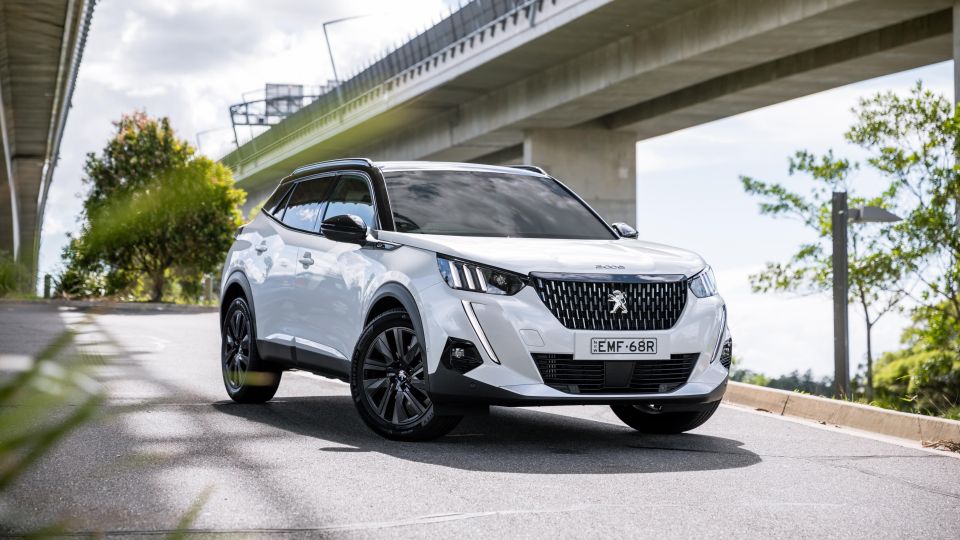
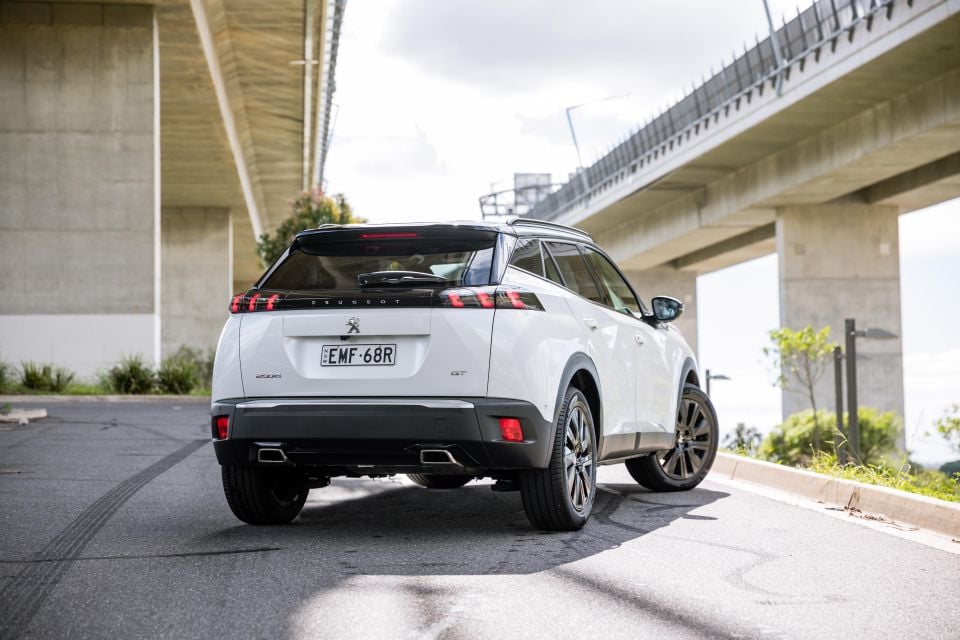

News Editor
New from
$34,990
excl. on-roads

News Editor
New from
$34,990
excl. on-roads


News Editor
New from
$34,990
excl. on-roads

News Editor
New from
$34,990
excl. on-roads
Quickly see how this car stacks up against its competition. Select any benchmark to see more details.
Where expert car reviews meet expert car buying – CarExpert gives you trusted advice, personalised service and real savings on your next new car.
Small SUVs are big business in Australia, but the old Peugeot 2008 was a bit of an under-achiever. It was attractive enough, but it never sold as well as the larger 3008 or the old Mitsubishi ASX-derived 4008, let alone rival small SUVs.
For 2021, there’s an all-new 2008. It shares its Common Modular Platform (CMP) with the likes of the redesigned 208 hatch and upcoming Citroen C4, and is offered in a simple model range with two trim levels and two powertrains.
In terms of overall length, the 2008 is somewhere between the likes of European-focused light SUVs like the Ford Puma, Nissan Juke and Volkswagen T-Cross and small SUVs like the Mazda CX-30. At 4300mm long, it’s also 95mm longer than a Hyundai Kona.

Dare I say it, this small SUV is beautiful. It might even be better looking than the car it’s based on, the 208 hatchback.
Even as someone who is rarely a fan of black packs or white paint, this 2008 GT Sport caught my eye and never let go of it, with its black 18-inch alloy wheels, black roof, grille and mirrors complementing its classy Pearl White paint.
The side sculpting is complex without being overwrought, while the cat’s claw and plunging fang LED daytime running light elements up front give it an unmistakable face.
If there’s just one element of the exterior that looks a little awkward, it’s the rear bumper. From some angles, it appears to jut out like the underbite of a French Bulldog. Perhaps that’s appropriate, then.
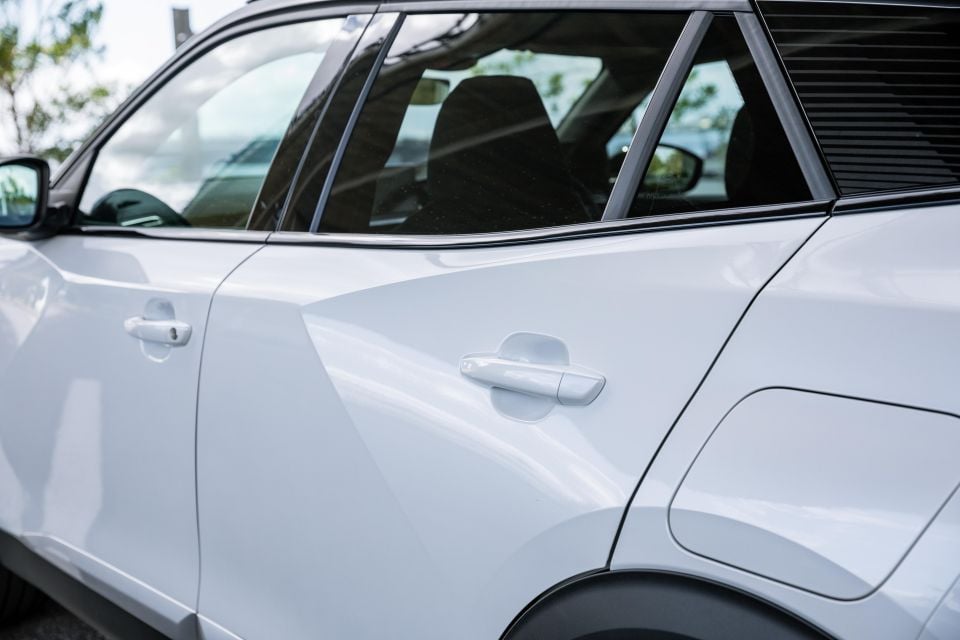
The 2021 Peugeot 2008 range comprises just three models: the base Allure at $34,990 before on-roads, the recently announced GT at $38,990 before on-roads, and the GT Sport you see here, priced at $43,990 before on-road costs.
Our tester also included a panoramic sunroof ($1990) and the aforementioned pearlescent paint ($1050), for a grand total of $47,030 before on-road costs.
That price tag puts the 2008 GT Sport very much at the pointy end of the segment in terms of pricing. Similarly-priced rivals include the Mazda CX-30 G25 Astina AWD ($43,690) and range-topping models like the Mitsubishi Eclipse Cross Exceed AWD ($40,790), Hyundai Kona N Line Premium ($42,400) and Kia Seltos GT-Line ($41,700).
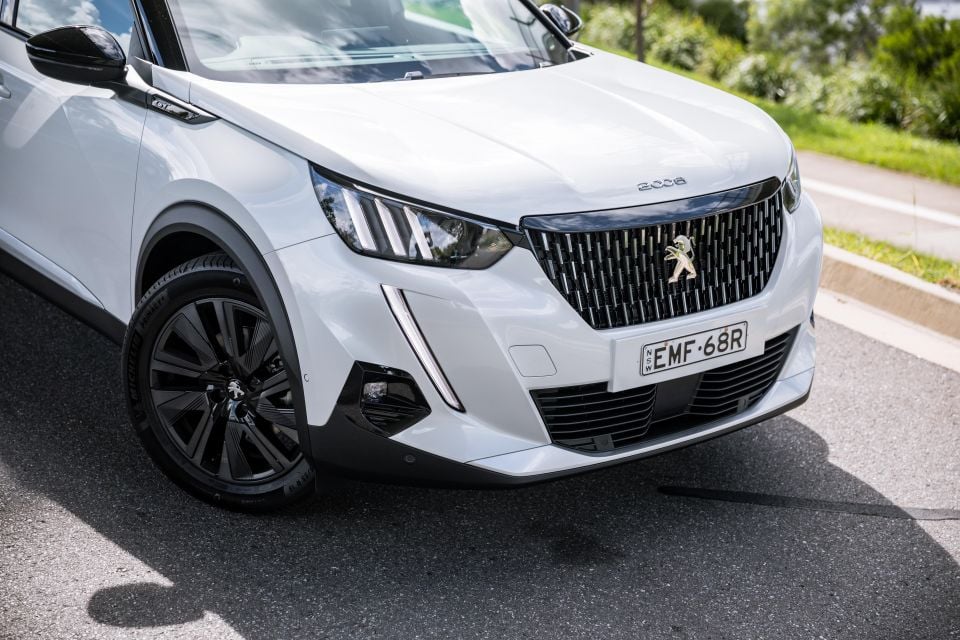
If you fancy something European, you can get the slightly smaller but no less powerful Renault Captur in flagship Intens trim for $35,790 before on-road costs. The similarly-sized Skoda Kamiq 110TSI Limited Edition rings in at $35,490 before on-roads and still slides under $40,000 drive-away even when optioned to an almost identical level to the 2008 GT Sport.
The Peugeot is also priced against high-spec SUVs one rung above in the mid-sized SUV segment, while at $43,990 before on-roads it’s similar to entry-level luxury small SUVs like the Lexus UX200 Luxury ($44,445) and Audi Q2 35 TFSI ($42,900).
In all, there’s a staggering array of rivals across multiple segments and from a wide range of brands. The 2008 will want to be good, then.
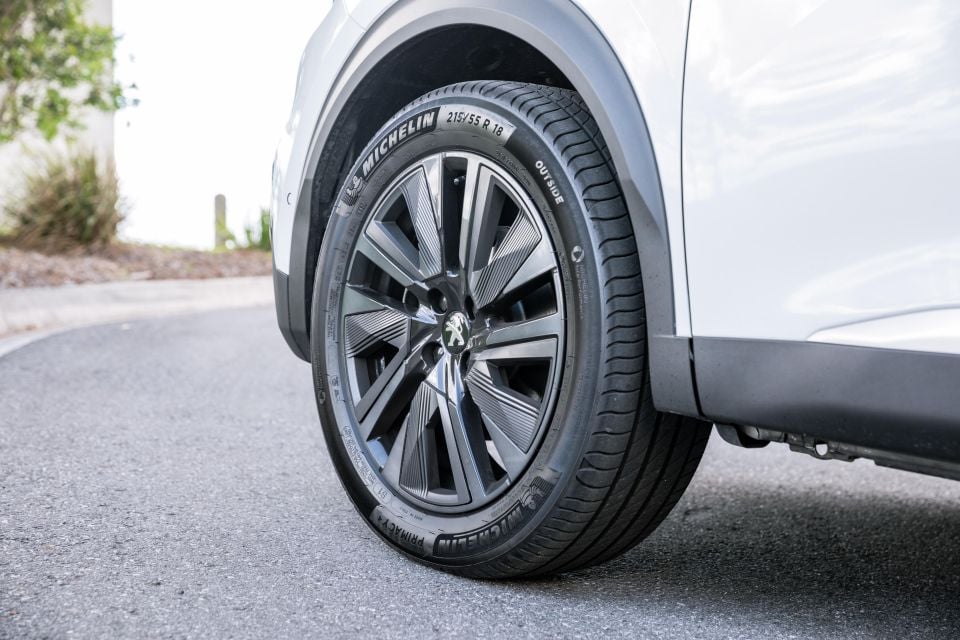
Buy your new car without the stress. It's fast, simple and completely free.

Great service from Travis and team, second time I have used this business would not hesitate to recommend them to anyone
Craig C.
Purchased a Ford Ranger in Sunshine Coast, QLD
CarExpert helped Craig save thousands on his Ford Ranger, now let us save you on your next new car.
Find a dealAll 2021 Peugeot 2008 models come standard with the following equipment:
The mid-range GT adds:
That leaves the GT Sport at the very top of the range. It adds:
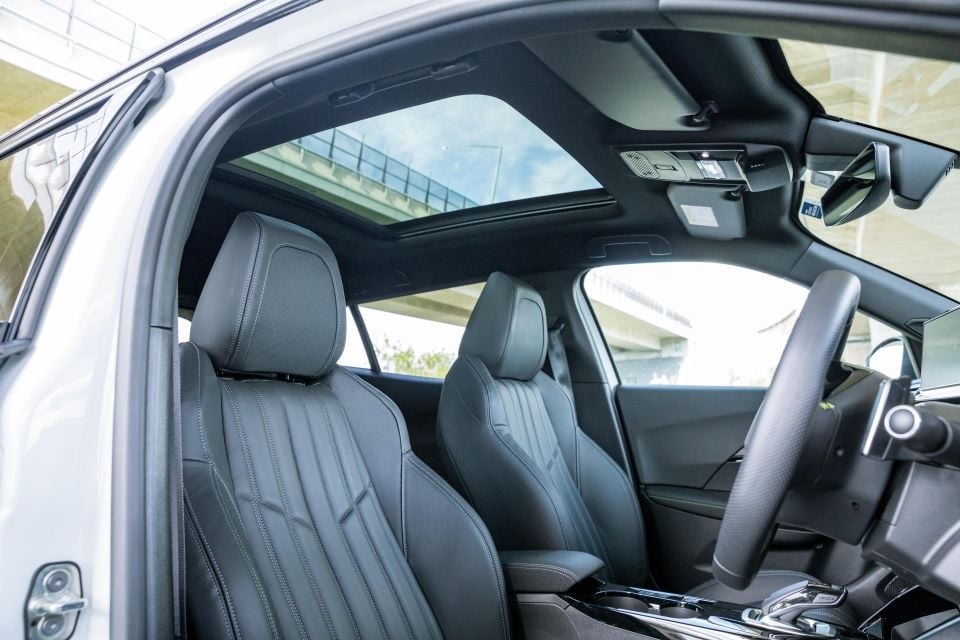
Peugeot has also included keyless entry that works similarly to BMW’s Comfort Access system, in that it’ll lock the car as you walk away from it. You can turn off this feature.
Unlike up-spec 3008 and 5008 models, the massaging driver’s seat doesn’t feature a range of modes and levels of adjustability. There’s just one style of massage and one level for it.
Adding premium paint and a panoramic sunroof keeps the Audi Q2 priced slightly above a 2008 GT Sport, but the gulf in price isn’t substantial considering the Audi offers more snob appeal.
That’s not to mention the raft of mainstream brand rivals that cost less than the Peugeot while offering almost identical levels of equipment, if not a massaging driver’s seat.
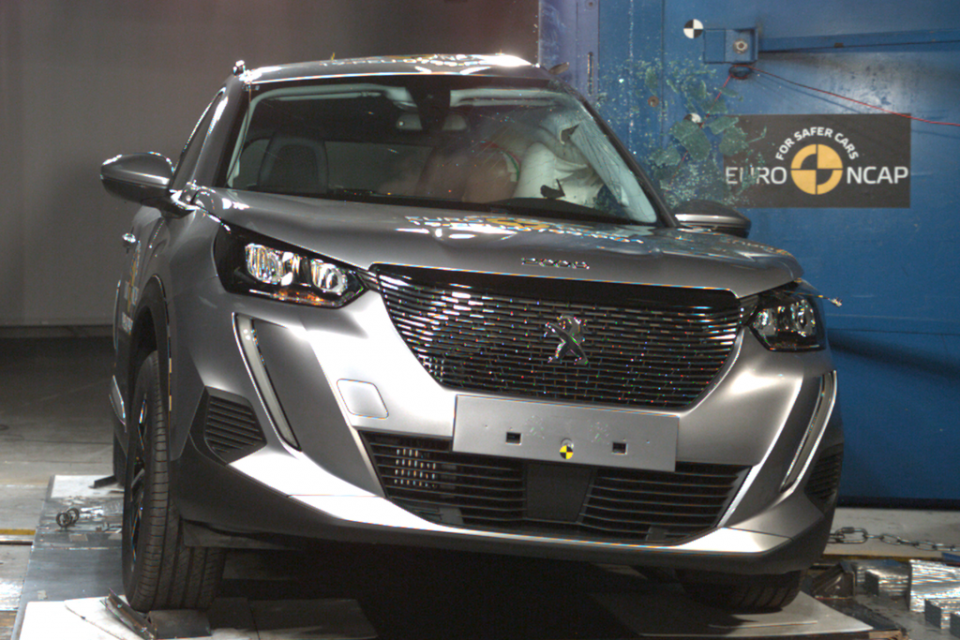
The Peugeot 2008 has a five-star rating from ANCAP based on Euro NCAP testing conducted in 2019. It received a score of 93 per cent, the child occupant protection score was 87 per cent, vulnerable road user protection was 73 per cent, and safety assist was 72 per cent.
While both 2008 models feature autonomous emergency braking (AEB), the GT and GT Sport add low-light pedestrian and cyclist detection plus automatic high-beam and blind-spot monitoring.
That’s in addition to features found on the Allure, like:
Only the GT Sport features lane positioning assist (lane centring) and adaptive cruise control with stop/go.
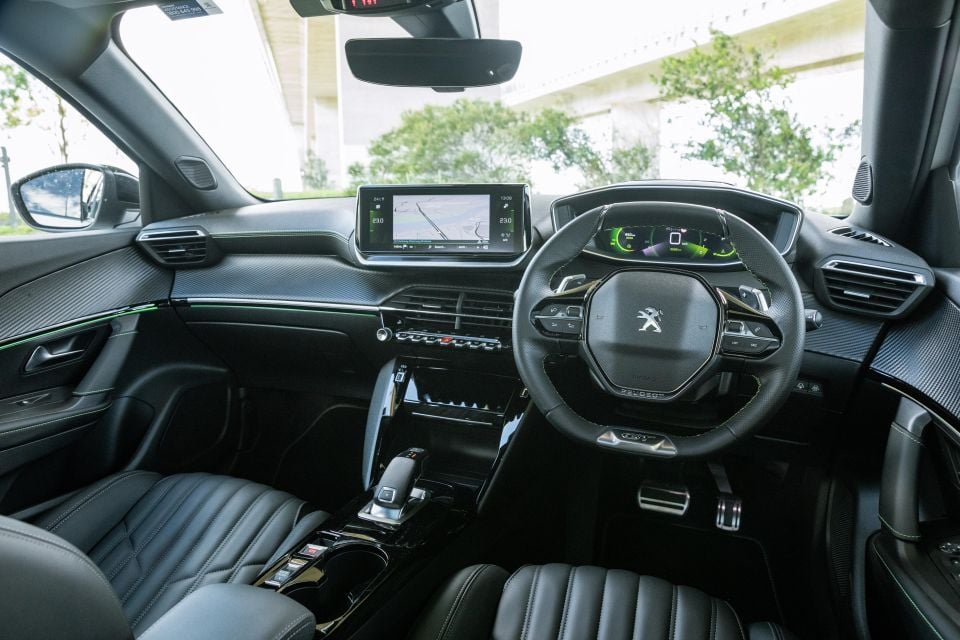
The 2008 certainly has a distinctive cabin.
Carbon fibre-look trim is used on the doors, while leatherette trim across the dashboard also has a carbon-fibre pattern to it.
Lime green stitching is found on the dash and doors, while you can choose a matching green as one of the three instrument cluster and touchscreen colours. The colour-adjustable ambient lighting also offers a matching green among its eight options.
The GT Sport’s larger 10.0-inch touchscreen juts out prominently from the dash which, in modern Peugeot fashion, features a high-mounted digital instrument cluster and a small steering wheel. The dashboard and the tops of the front doors are covered in soft-touch plastic, though hard plastic is substituted in the rear.
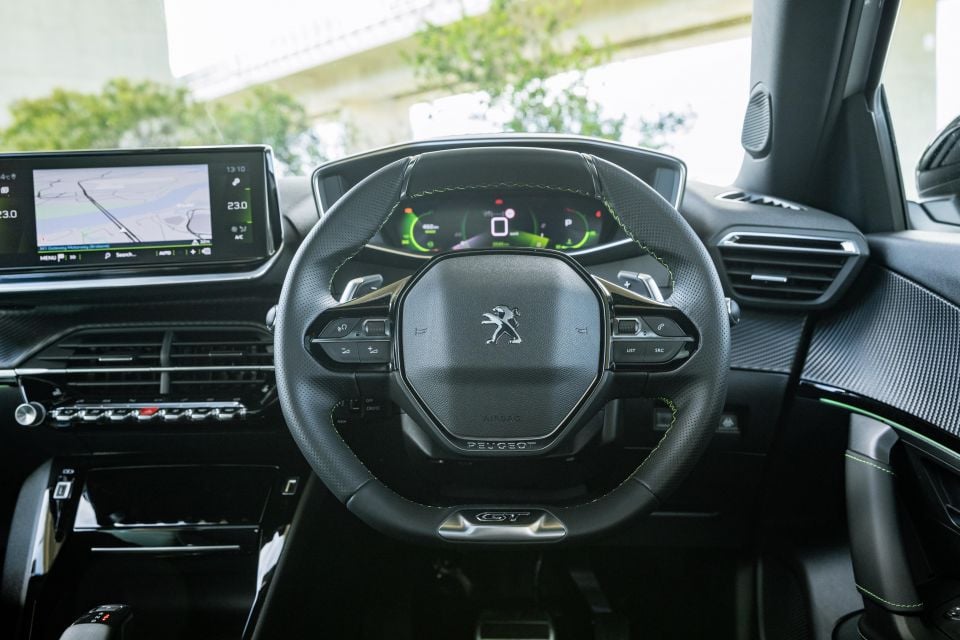
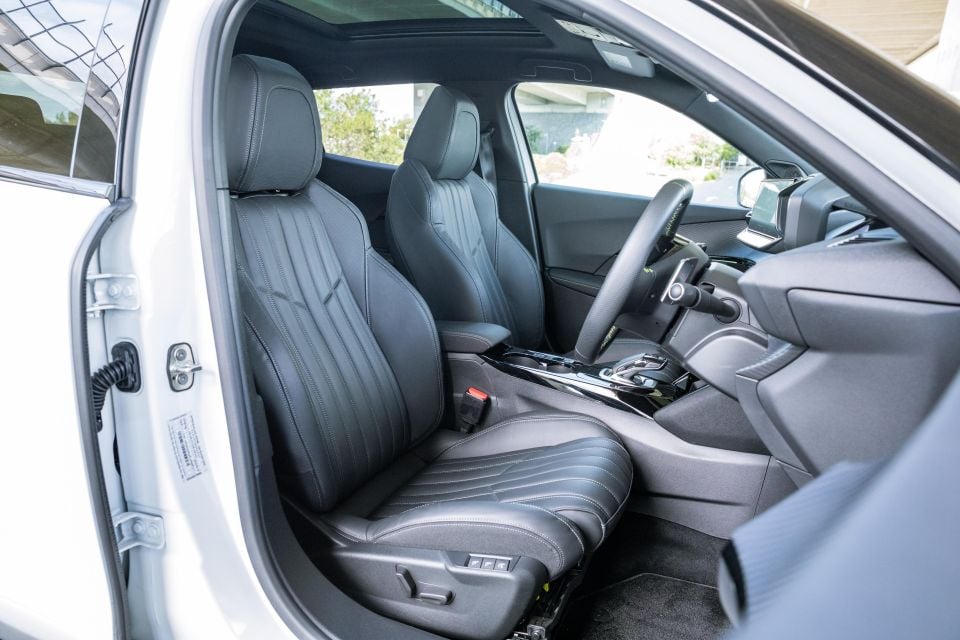
Peugeot’s i-Cockpit interior design works a lot better in the larger 3008 and 5008 crossovers.
Firstly, the 2008 is a little awkward to step into due to its high door sills. While I was able to find a mostly comfortable seating position, I then found myself wondering if taller or more solidly-built people would struggle.
I had the seat adjusted to its lowest position, but had to shift the steering wheel up to its highest position so there was enough clearance between the wheel and my thighs. And yet, I still found my thighs making contact with the wheel at times, while the steering wheel was getting awfully close to impeding my view of the instrument cluster – remember, Peugeot wants you to look over the steering wheel and not through it to view the gauges.
While the 3008 and 5008’s cockpit looks confronting at first but becomes comfortable almost instantly, the 2008’s interior layout warrants an extended test drive to see if you’re comfortable.

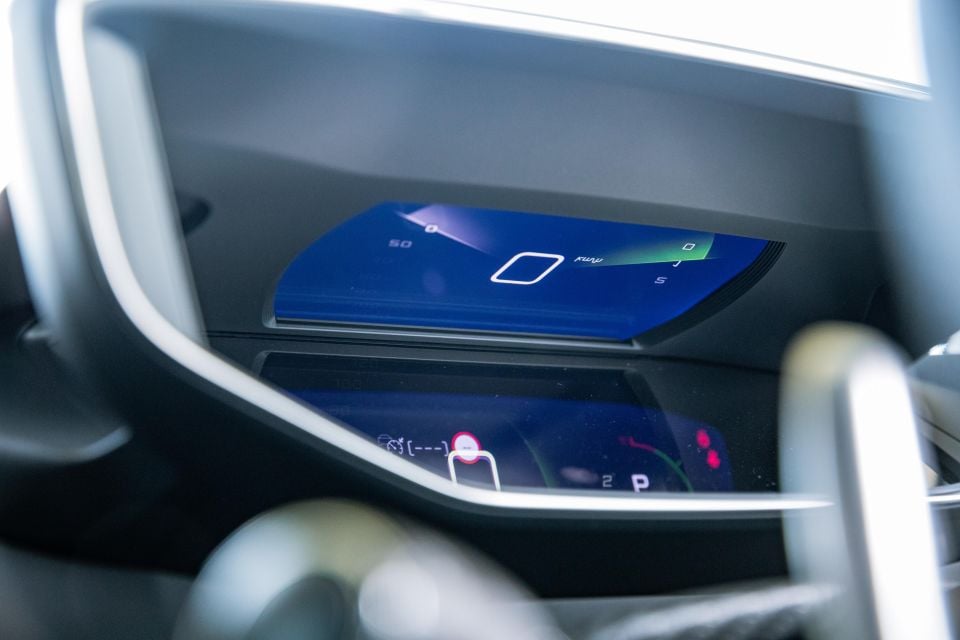
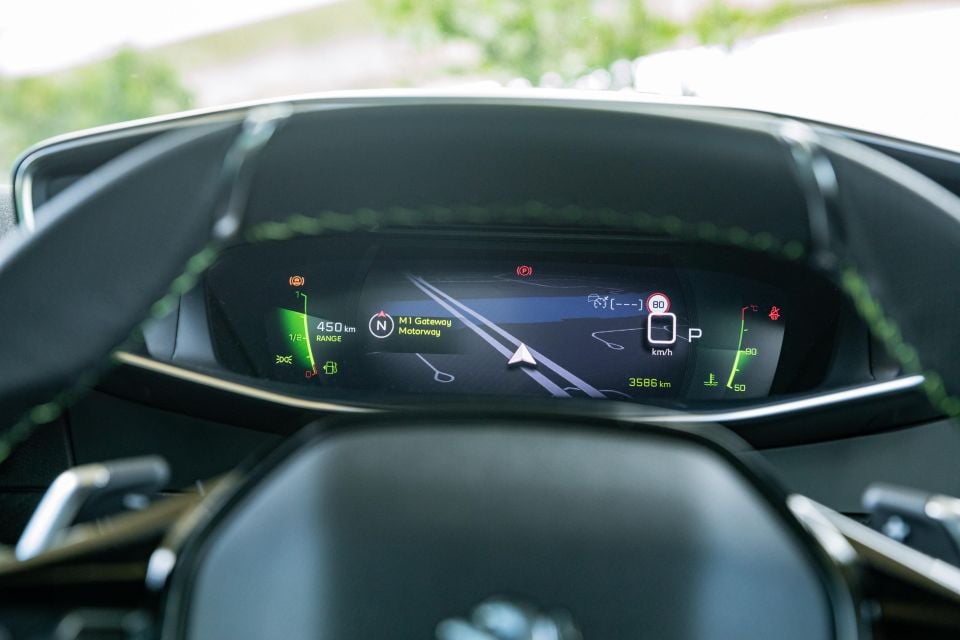
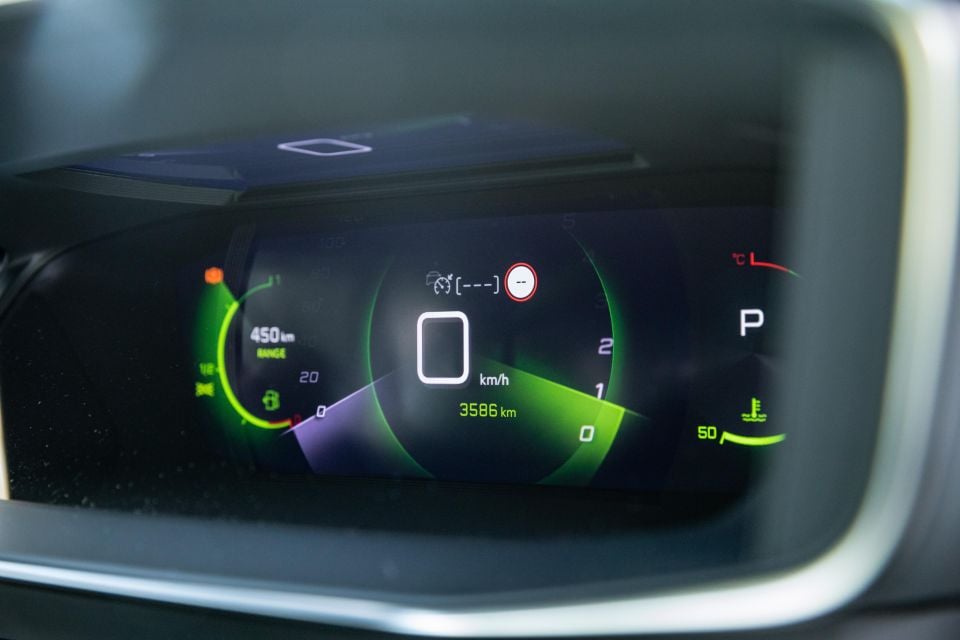
Where the 2008 is refreshingly distinct from the 3008 and 5008 is in its instrument cluster, which Peugeot calls the i-Cockpit 3D digital instrument cluster. We won’t bore you with the science – the short version is it uses clever reflections to make what’s projected in the middle of the display appear closer to you than the rest, and boasts a trippy 3D/holographic look to it.
It sounds gimmicky but the instruments are actually extremely legible and attractive, and you can toggle between different display modes.
The 2008’s interior design is otherwise a little less dramatic than its larger siblings’, with a more upright centre stack and less of a cockpit-style layout. Like the larger Peugeots, however, the 2008 lacks physical climate controls.
Instead, there’s a row of touch-capacitive buttons on the minimalist centre stack, one of which takes you to a climate menu. There’s also a shortcut button on either side of the touchscreen. While the temperature appears on both sides of the touchscreen, the 2008 only has single-zone climate control.
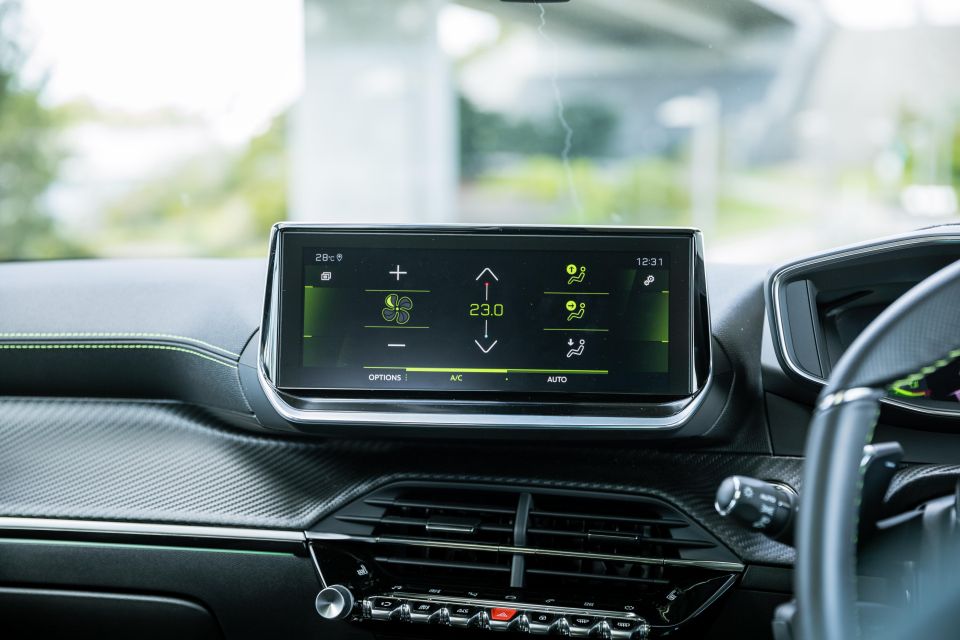
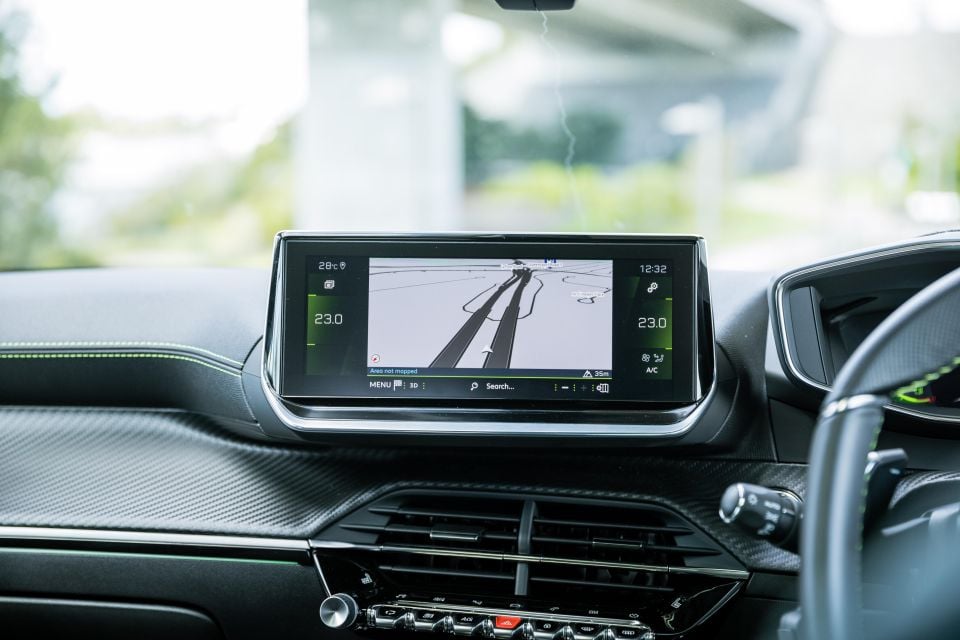
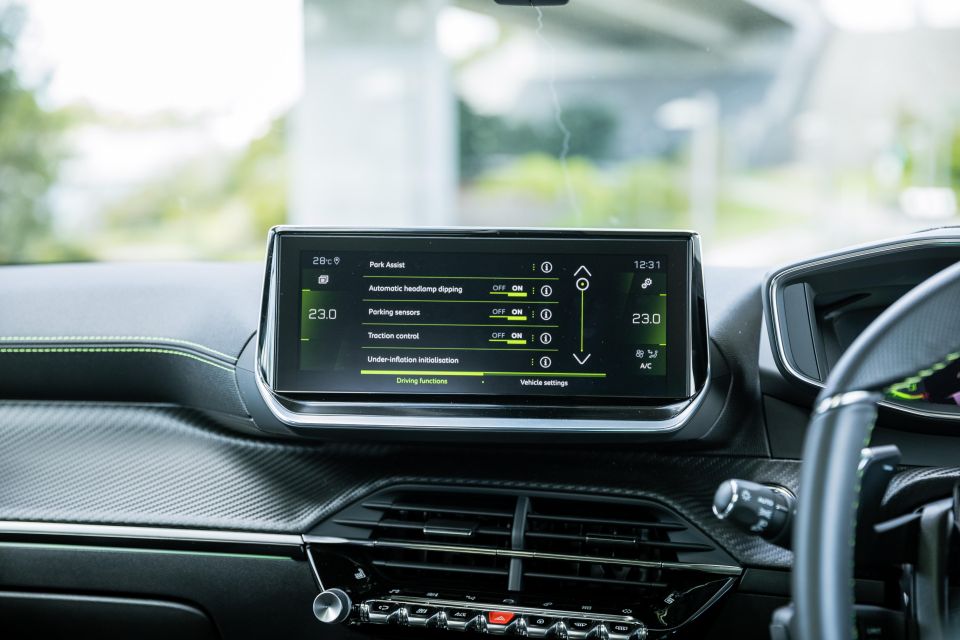
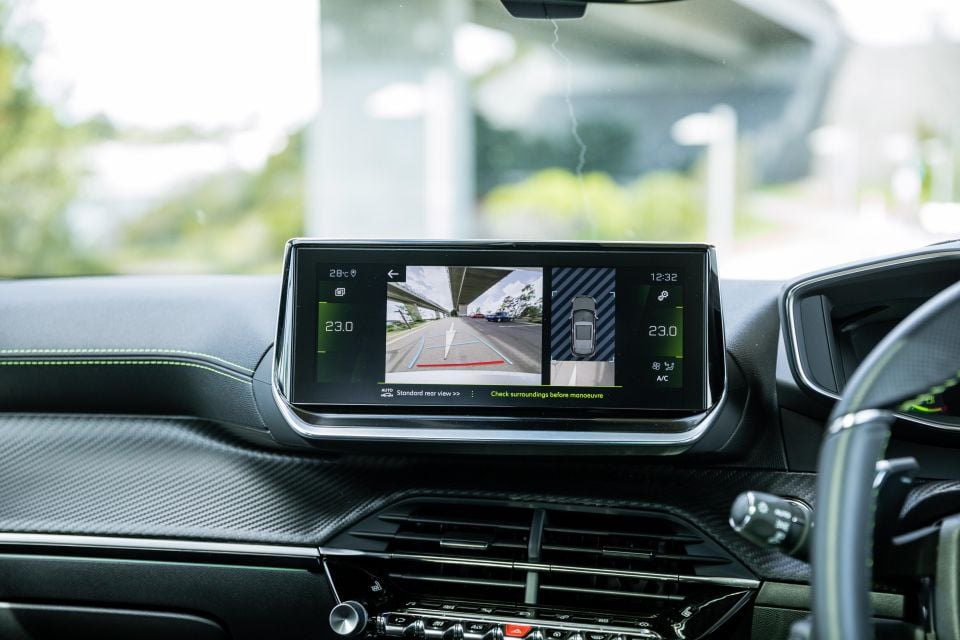
The infotainment system isn’t the most intuitive. There are technically three different settings menus, one of which is accessible via a touch-capacitive switch.
Can we cancel piano black trim already? The stuff is everywhere in the 2008’s cabin and looks nice for around three seconds before it’s covered in dust and smudges. Even more aggravating, Peugeot has covered the door for the wireless phone charger in the trim and neglected to put a button or metal ridge on it. That means you can only open this cubby by adding yet more smudges.
The touch-capacitive buttons also have a piano black finish, as do the rocker-looking switches which look better than they feel.
When you shift the 2008 into reverse and see a top-down image of your vehicle, you might think that it’s the same kind of surround-view camera as you’ll find in a Nissan Qashqai. Instead, it stitches together an image of your surroundings once the rear camera has picked up the footage, which means it’s only really useful for seeing things you’ve already driven past.
In essence, then, it’s a camera for correcting your existing parking job, and no more.


Even with the panoramic sunroof, my 180cm self was able to comfortably sit upright in the rear. That’s in stark contrast to the 5008 we tested with a panoramic sunroof, where headroom actually felt worse than in this smaller SUV.
With the front seats adjusted for somebody my height, knee room was a touch tight, though Peugeot has helpfully scooped out the front seat backs. Overall, however, the back seats of the 2008 offer a competitive level of space to other small SUVs.
Just be mindful that, as with many other small SUVs, the centre seat is a bit of a squeeze, not helped by the protruding centre console and the raised floor in front of the seat.
There are no rear air vents, though there are two USB-A outlets. There are also three top-tether and two ISOFIX anchor points for child seats. All four doors also have bottle holders large enough to fit a 600ml bottle.

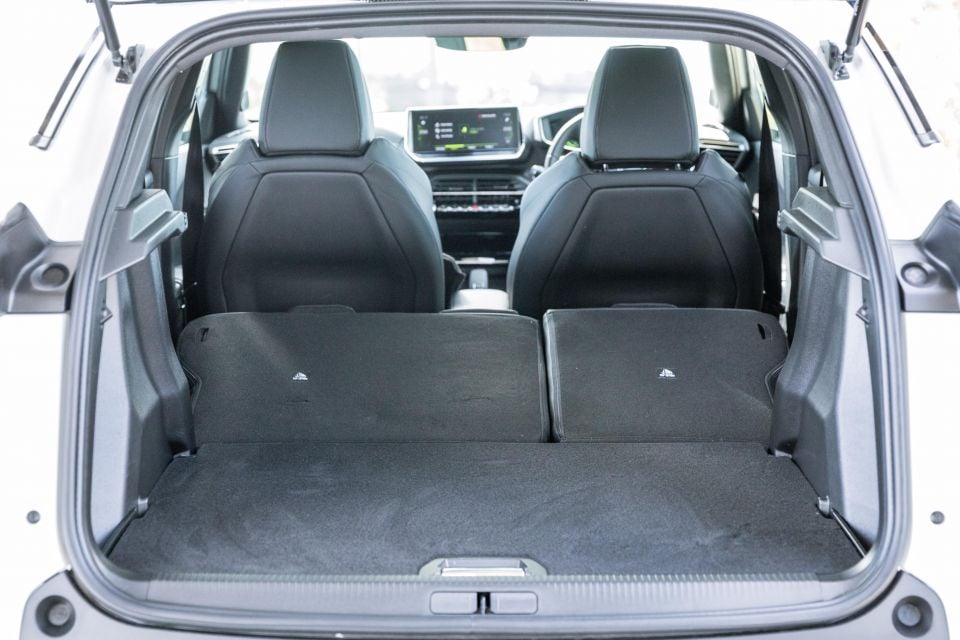
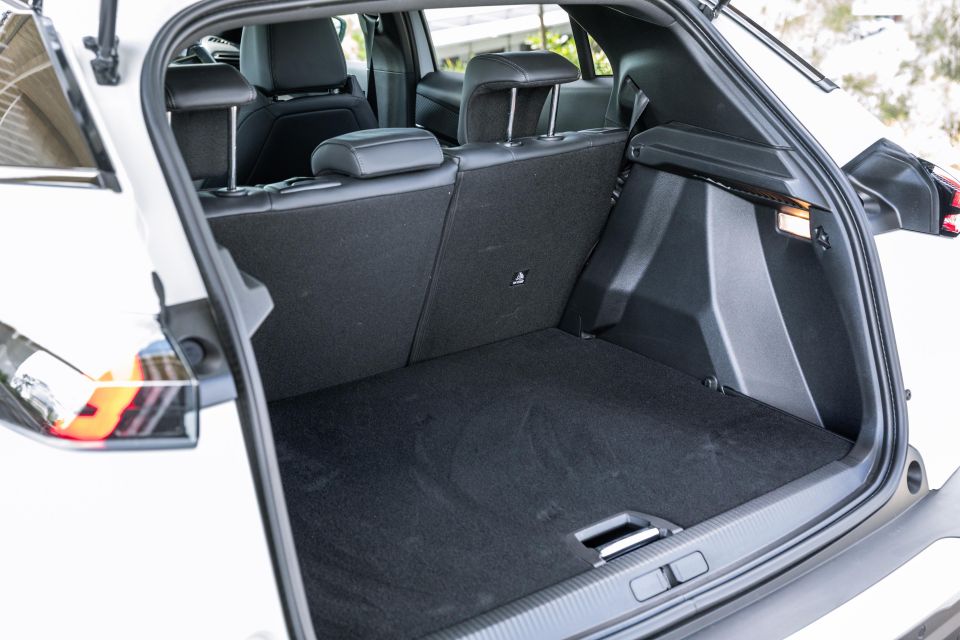

Behind the second row of seats, there’s between 434L and 545L of capacity with the second row in place as there’s an adjustable load floor. This expands to 1015L-1467L with the rear seats folded.
Those figures put the 2008 at the upper end of the small SUV class for practicality.
It’s a broad space, complete with remote releases for the rear seats and a luggage cover that slides automatically up when you pop the boot to make loading big items easier.
I enjoyed driving the 2008 with another person on board, as that was the only way to stop a persistent rattle emanating from the front passenger seat.
It’s an identical rattle to one that plagued a 5008 we had through our garage. Again, much like the 5008, an identical 2008 down in Melbourne was rattle-free.
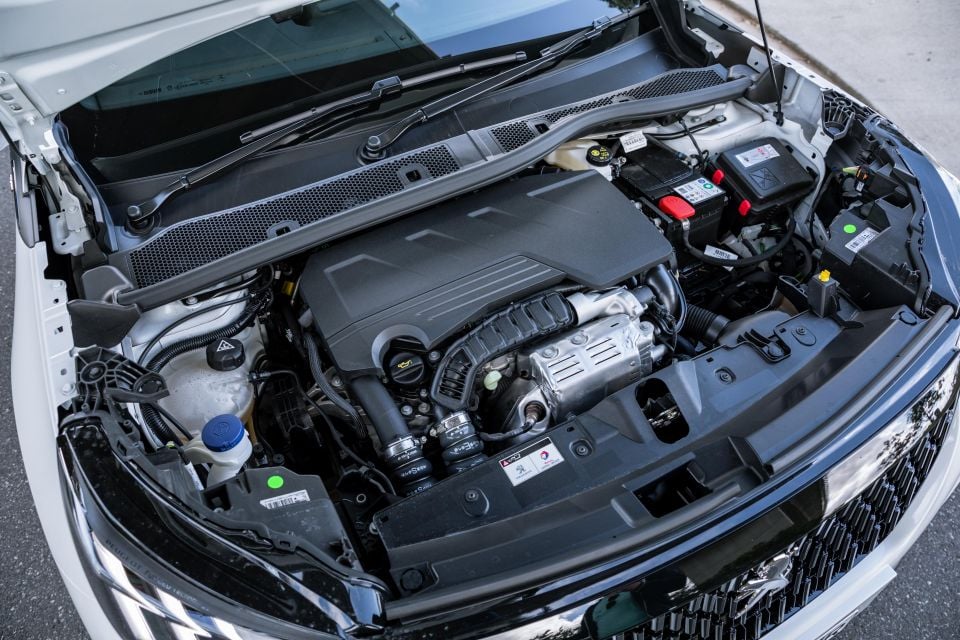
Where expert car reviews meet expert car buying – CarExpert gives you trusted advice, personalised service and real savings on your next new car.
The 2008 range uses a turbocharged 1.2-litre three-cylinder petrol engine in two states of tune. The cheaper Allure and GT produce 96kW of power and 230Nm of torque, while the GT Sport ups those outputs to 114kW and 240Nm. Its 0-100km/h time also improves from 9.3 to 8.7 seconds.
Unlike many similarly-sized crossovers developed primarily for the European market, the 2008 doesn’t use a dual-clutch automatic transmission. Instead, there’s an eight-speed torque-converter automatic sourced from Aisin. Again, this is an upgrade over the Allure, which uses a six-speed auto.
It might be a small engine, but the little three-pot’s torque figure is quite competitive with the class.
For example, the torquiest engine in the Mazda CX-30 range produces 252Nm and the Mitsubishi Eclipse Cross’ engine manages 250Nm. It also stacks up well against the 110kW/250Nm turbocharged four in the Audi Q2 35 TFSI.
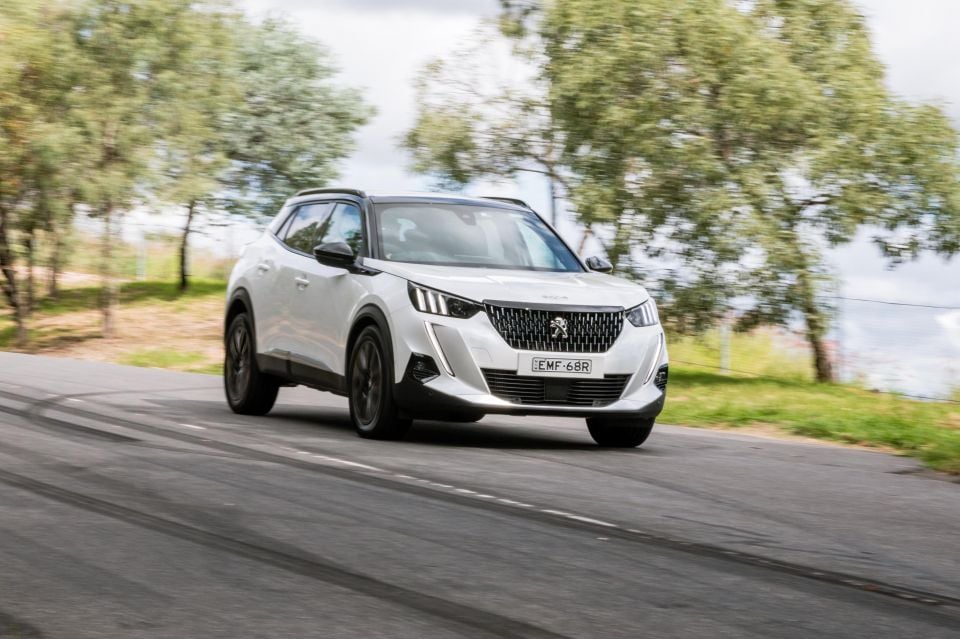
The 2008 GT Sport is a peppy little thing.
You’ll either find the turbocharged engine to have a charming thrum, or you’ll think it sounds like a pool filter full of marbles. Either way, it has more than enough scoot for getting around town and there are no untoward vibrations.
The 2008’s 240Nm of torque is available at just 1750rpm, so there’s plenty of grunt nice and low in the rev range. There’s no need to be too heavy on the throttle as, should you do so, you’ll encounter some wheelspin and the flickering of the ESC light.

There’s ample power and a slick-shifting transmission at your disposal. The GT Sport, as the name correctly suggests, is on the sportier side of things. The steering has a nice weight to it, though it lightens up at low speeds which is helpful when manoeuvring into a parking spot. Sport mode adds some more weight but it’s scarcely necessary.
On a winding road, the 2008 feels quite planted for a small crossover. It doesn’t feel quite as hunkered down as, say, a Nissan Juke, but body roll is well controlled and it’s stable in corners.
The 2008’s sporting disposition means it rides a little more firmly. Ride quality is generally quite comfortable, though some parts of the road like metal utility covers can send a jolt through the cabin, and the ride can feel terse over more rutted or poorly surfaced roads.
The lane-keep assist’s intervention was inconsistent, while the lane positioning assist – which works in conjunction with the adaptive cruise control – was considerably more forceful.
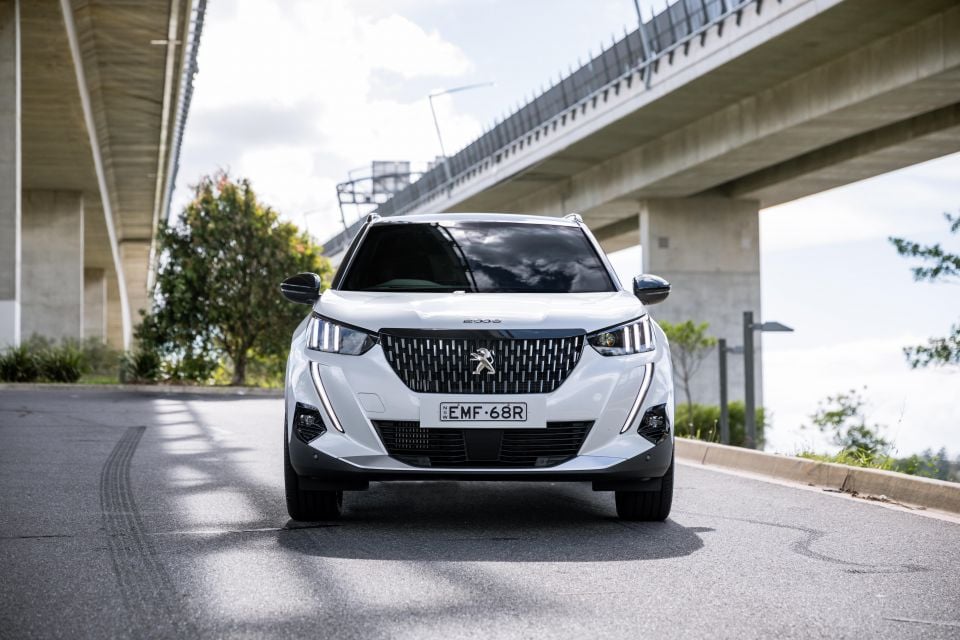
In some instances, like while approaching an off-ramp, the steering wheel would squirm as the system figured out which way to keep the car pointed. Overall, the two lane systems don’t work quite as well as those fitted to Hyundai, Kia and Volkswagen products.
At least they were visibly working, though. Strangely, though we had blind-spot monitoring turned on in the settings menu, the warning lights were never activated when a vehicle was in our blind spot. We experienced the same issue with our Melbourne tester.
Lights that worked exceptionally well, however, were the auto-levelling LED headlights. These provided excellent illumination, while the “three-claw” design means they look sharp, too.
The presence of cornering lights is also much appreciated, and more automakers should offer this kind of lighting.
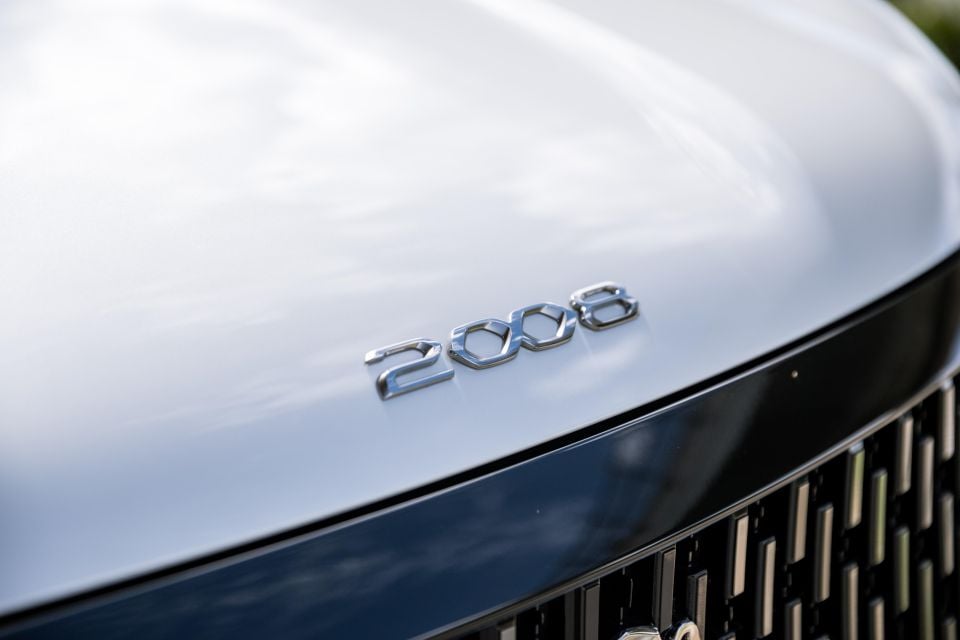
The Peugeot 2008 is covered by the company’s five-year, unlimited-kilometre warranty with roadside assistance and Service Price Promise program for the same five-year period.
The first five years of servicing will set you back $2466 in the GT Sport, though the base Allure is cheaper at $2235.
A Q2’s five-year servicing plan costs $2320, while a Captur costs $2385 to service over five years and a Kamiq 110TSI just $1400 if you pre-purchase a service plan. An Eclipse Cross Exceed, however, costs $1595 over the same period and a Seltos GT-Line will cost $1989.
We averaged 8.3L/100km on our Brisbane fuel economy loop, a mix of inner-city, suburban and highway driving. That’s rather surprising considering we averaged 7.7L/100km in the same loop with the larger 3008 and 8.0L/100km with the 5008.
Over the rest of our time with the 2008, the average fuel economy increased to 8.6L/100km. Peugeot’s advertised combined fuel economy figure is 6.1L/100km, 0.4L/100km more frugal than the less powerful Allure.
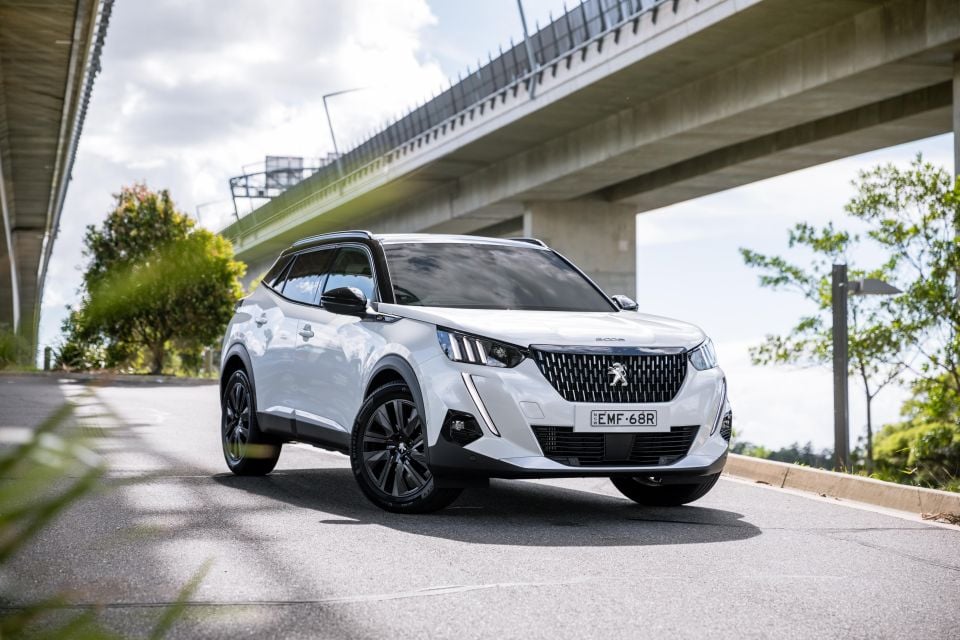
The Peugeot 2008 GT Sport does a lot of things right.
It looks fantastic inside and out, it drives well, and it’s got a long list of features.
Alas, it’s priced about $5000 too high. Perhaps if the Peugeot brand had the same cachet as, say, Audi or Lexus, the 2008’s pricing would be reasonable.
If you told a group of people, however, they could get an almost identically-specified Audi for $1-2k more than a Peugeot, we wonder just how many would still be keen on the French car.
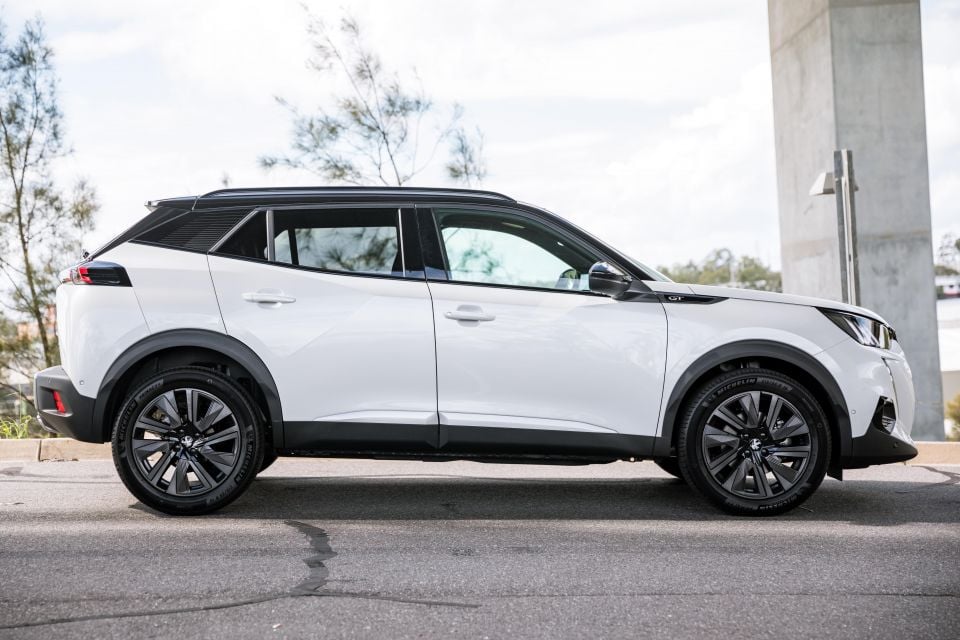
We also think that group of people would have at least a few members who would find the 2008’s interior layout peculiar and possibly even uncomfortable, while we maintain Peugeot’s infotainment needs work and will continue our crusade against piano black trim.
Since launching the 2008, Peugeot has introduced a new mid-spec GT that gives you a lot of the GT Sport’s extra equipment – although neither its more powerful engine nor, sadly, its adaptive cruise control – for a more palatable price of $38,990 before on-road costs. This strikes us as a much better value for money offering.
The 2008 has flair in spades, and not that kind of quirky French flair that can be an acquired taste. It has a modern, upscale look to its exterior, while its interior is more eye-catching than even that of a Q2 or Lexus UX.
That, coupled with the presence of luxury niceties like a massaging driver’s seat, might be enough to lure you away from an entry-level luxury brand rival.
Ultimately, though, the 2008 GT Sport’s ample charm isn’t enough to offset its price premium.
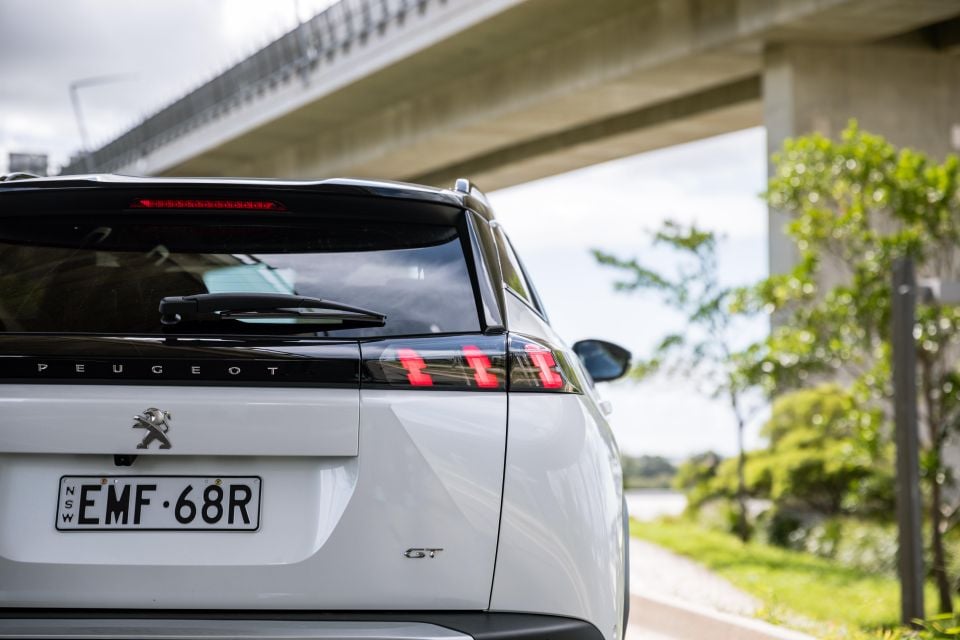
Click the images for the full gallery
Where expert car reviews meet expert car buying – CarExpert gives you trusted advice, personalised service and real savings on your next new car.
William Stopford is an automotive journalist with a passion for mainstream cars, automotive history and overseas auto markets.


William Stopford
5 Hours Ago


Ben Zachariah
6 Hours Ago


Derek Fung
6 Hours Ago


Matt Campbell
13 Hours Ago


William Stopford
1 Day Ago


Josh Nevett
1 Day Ago